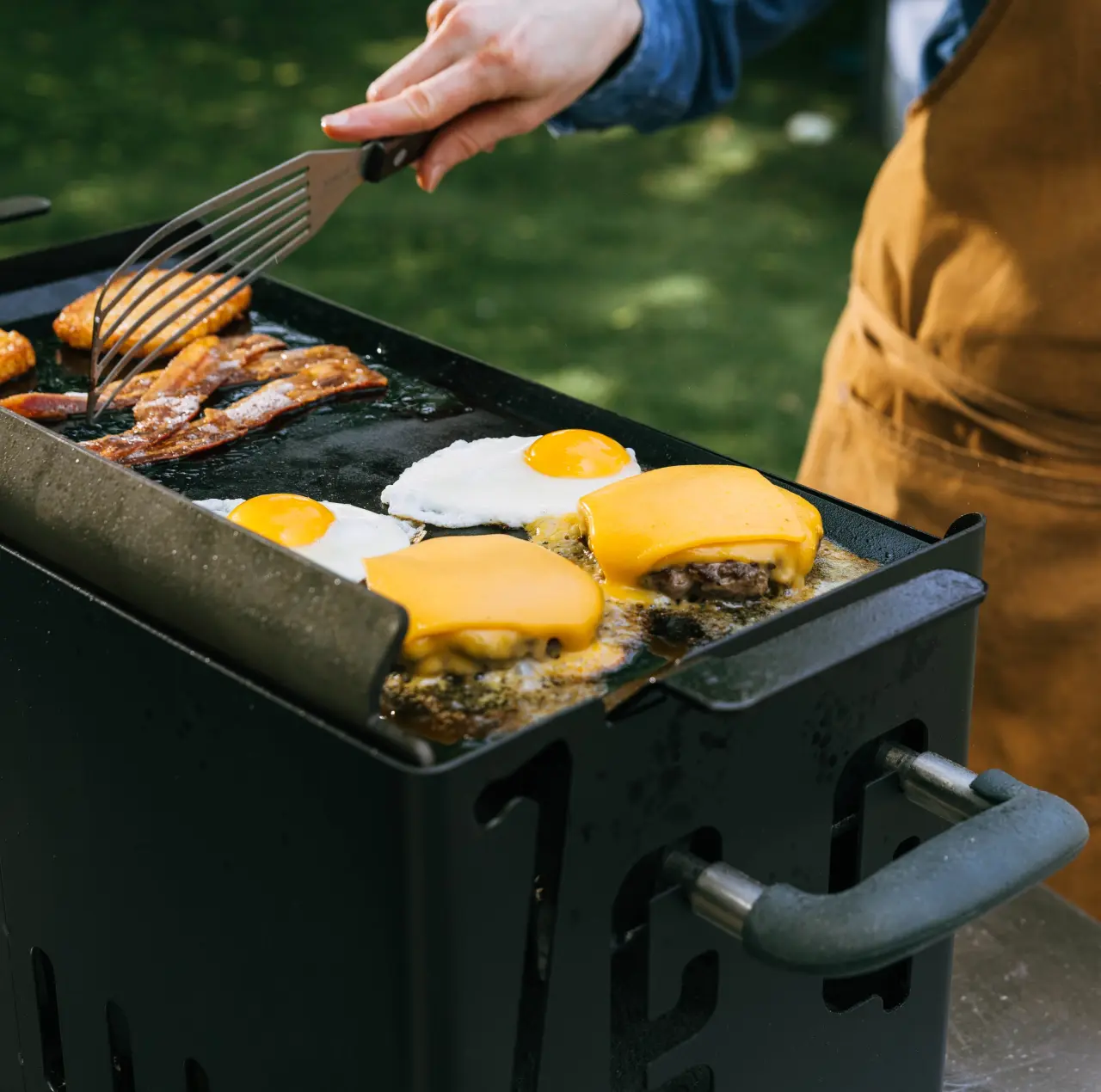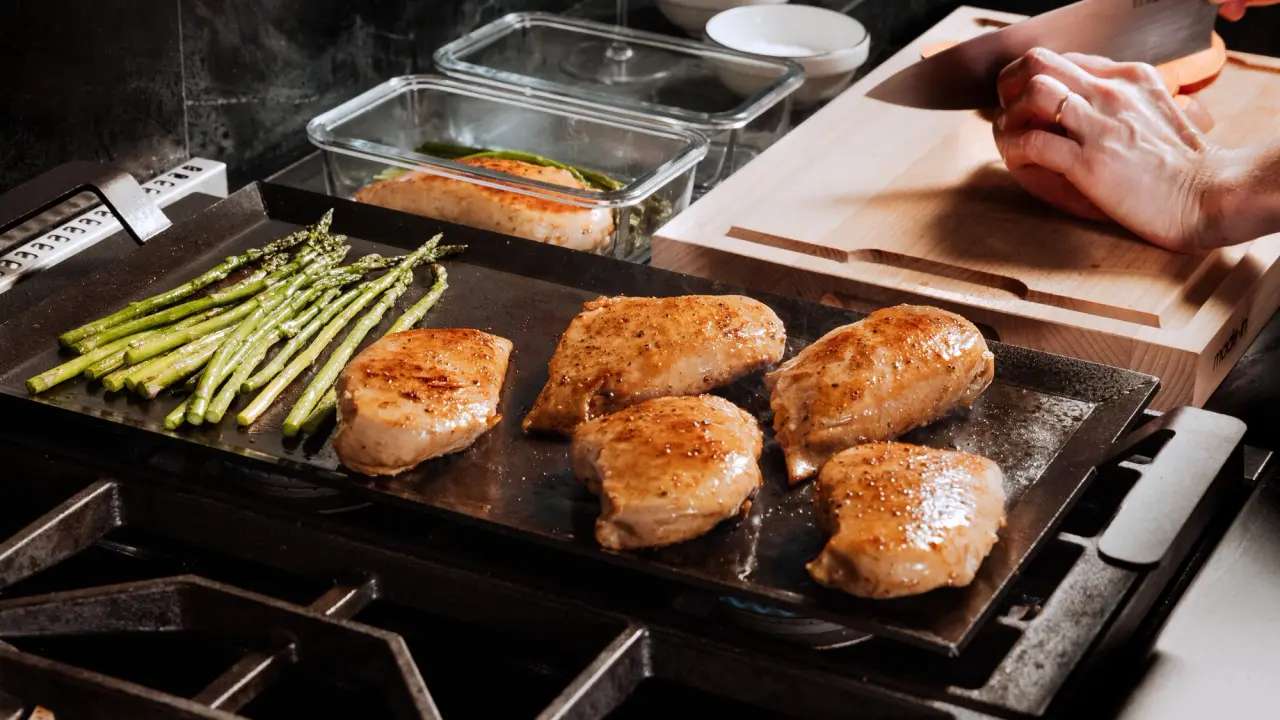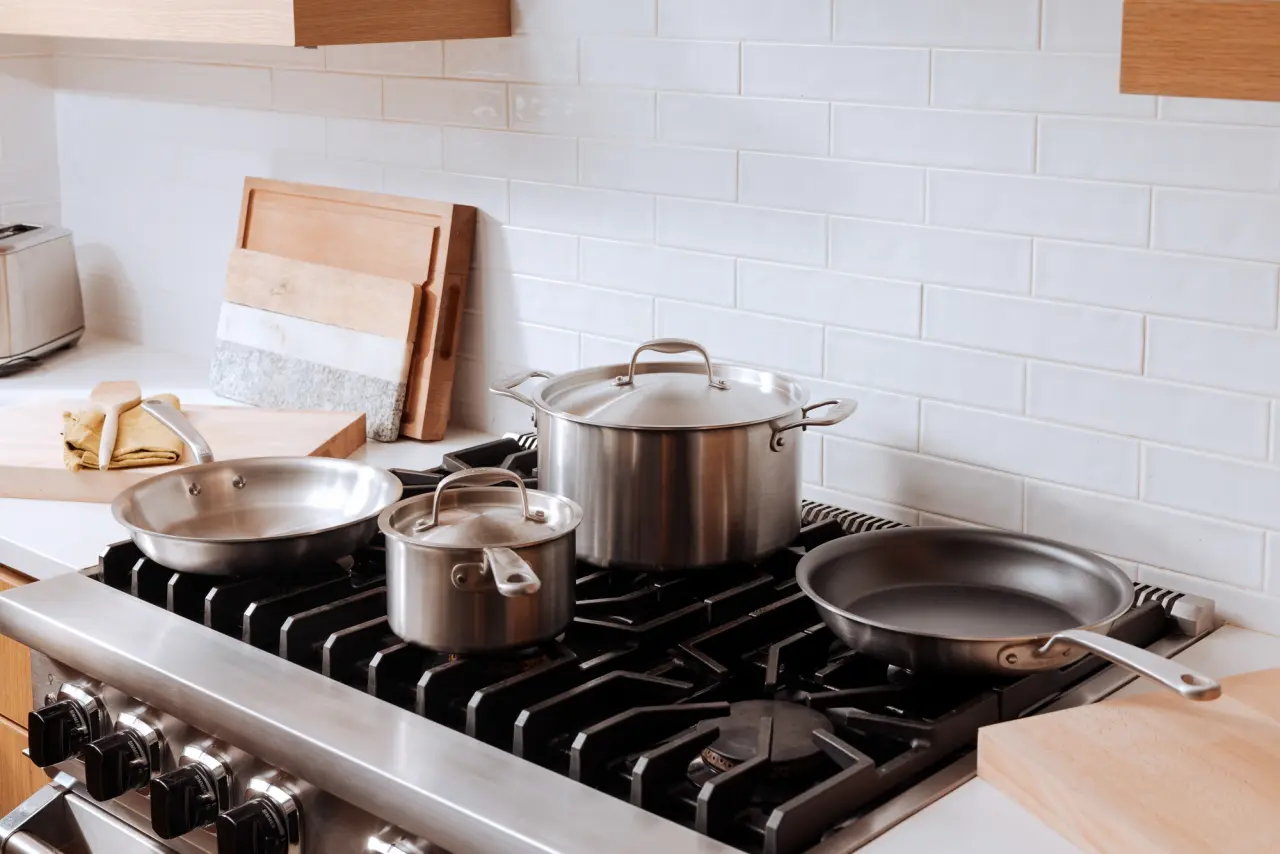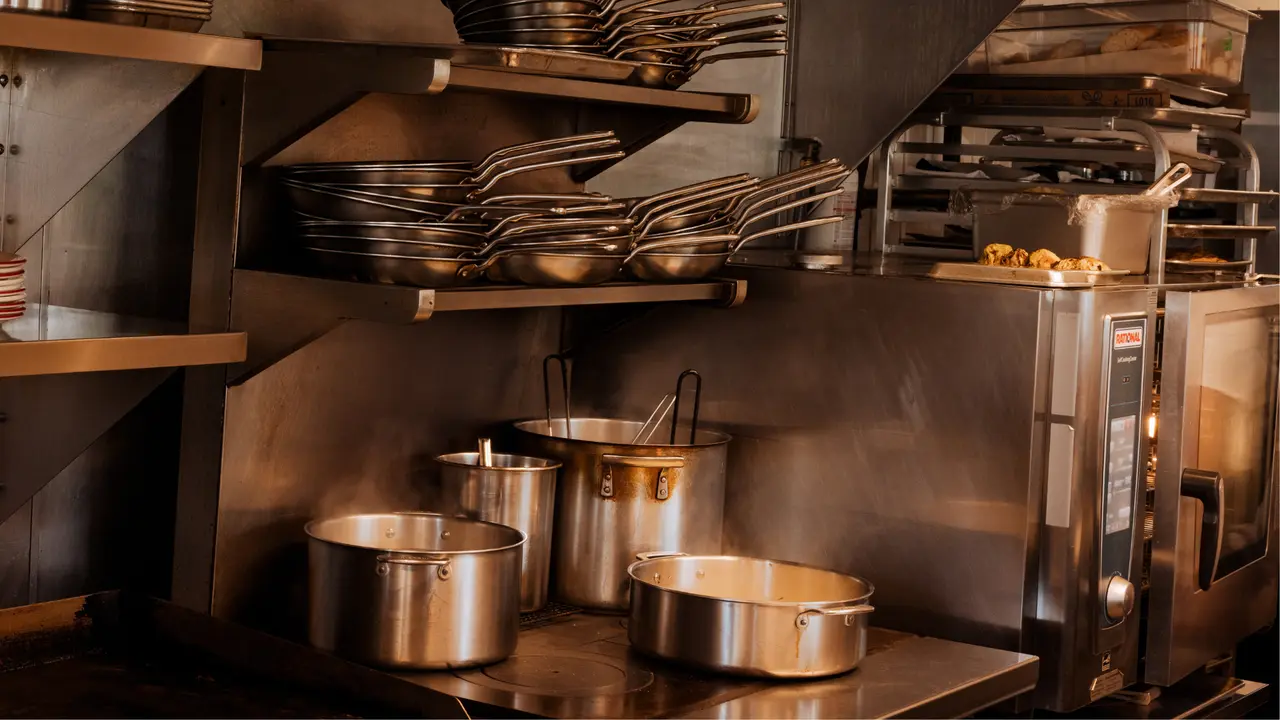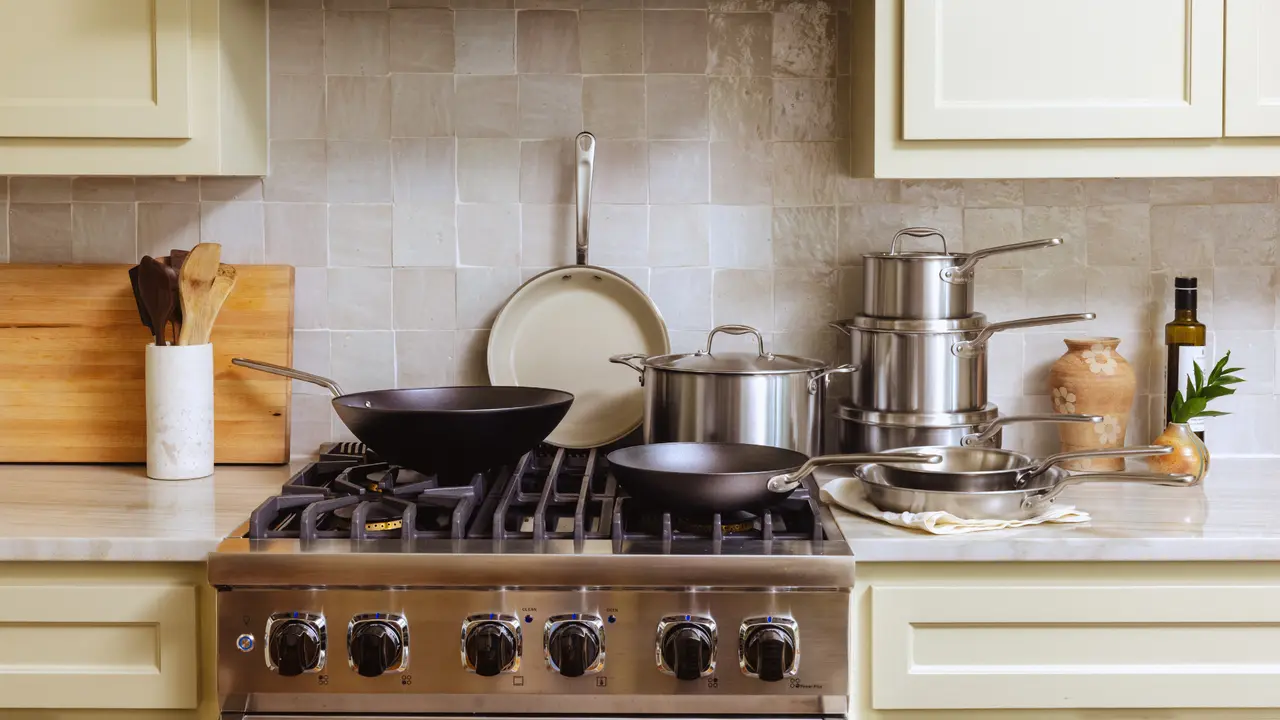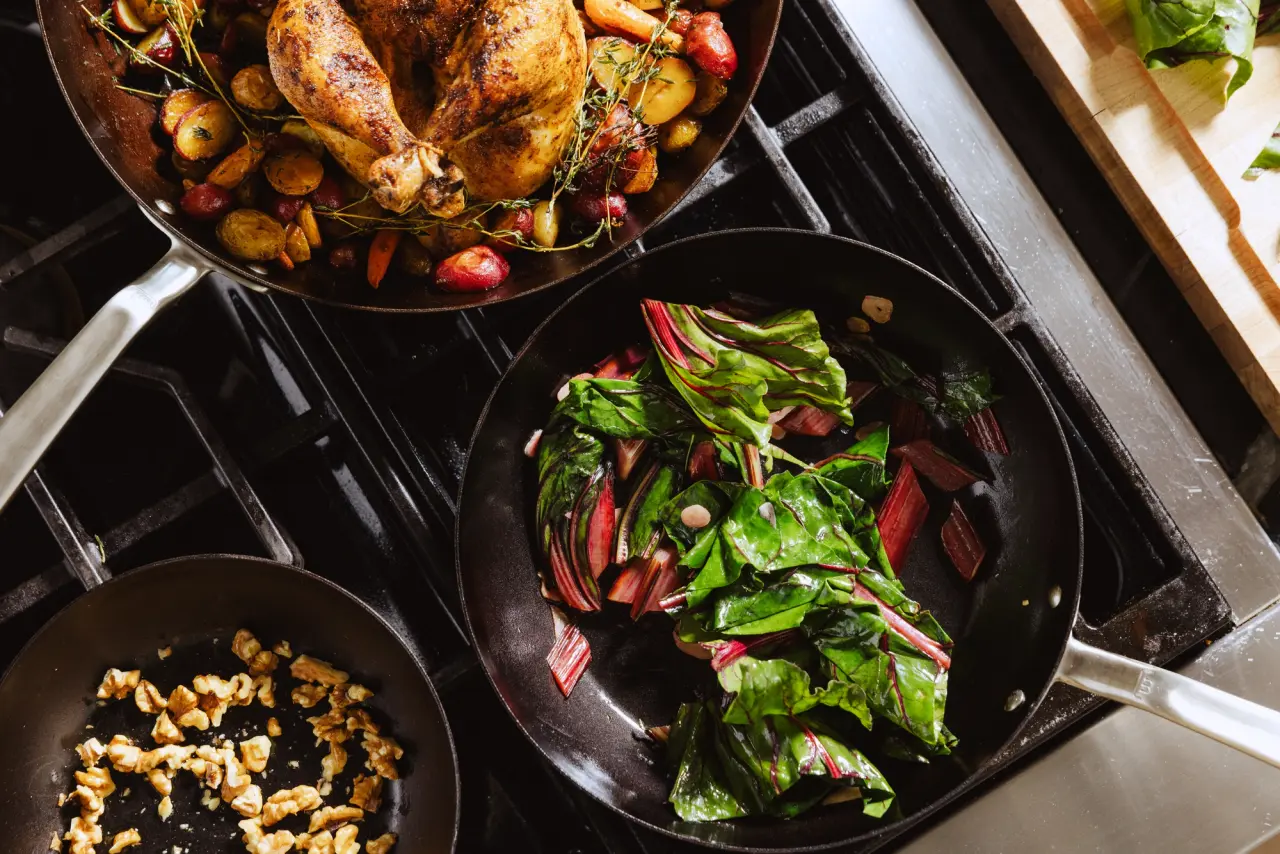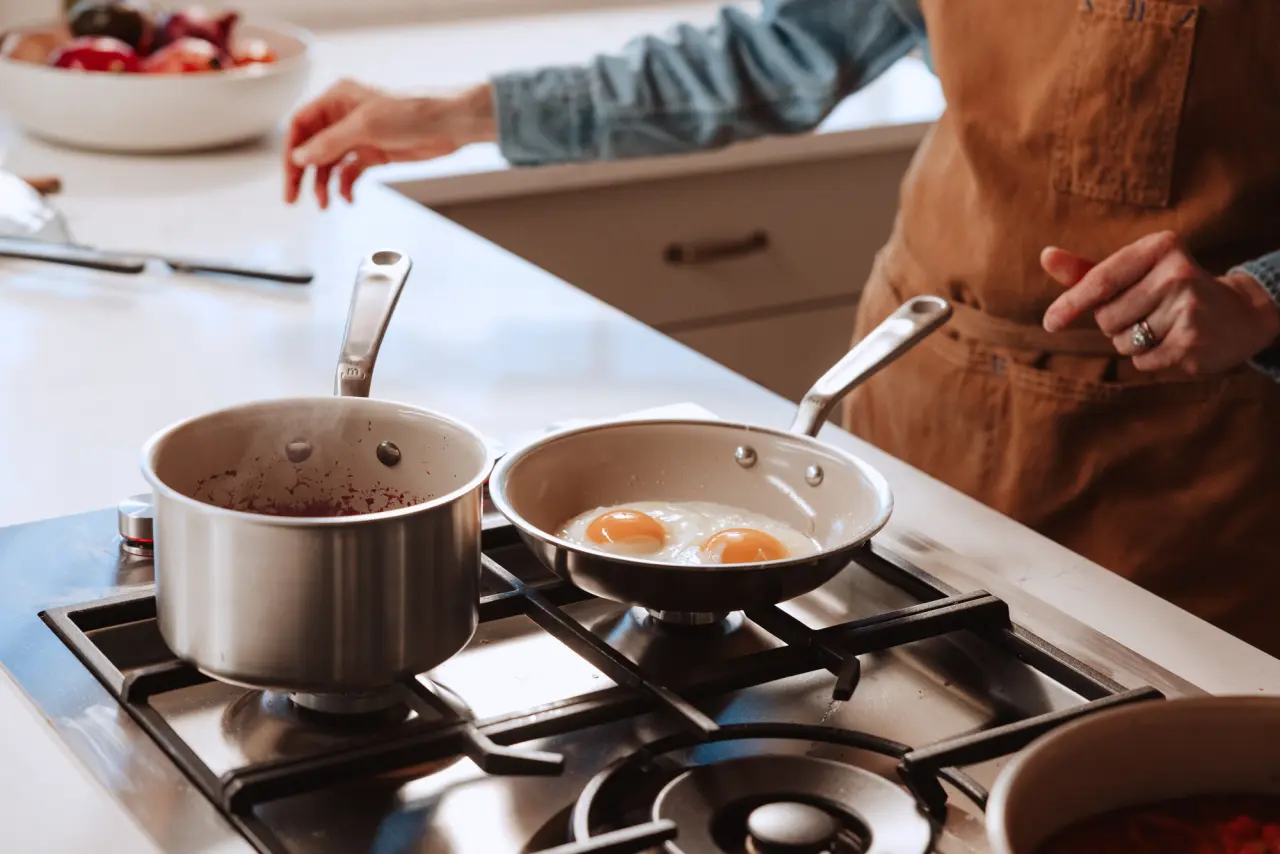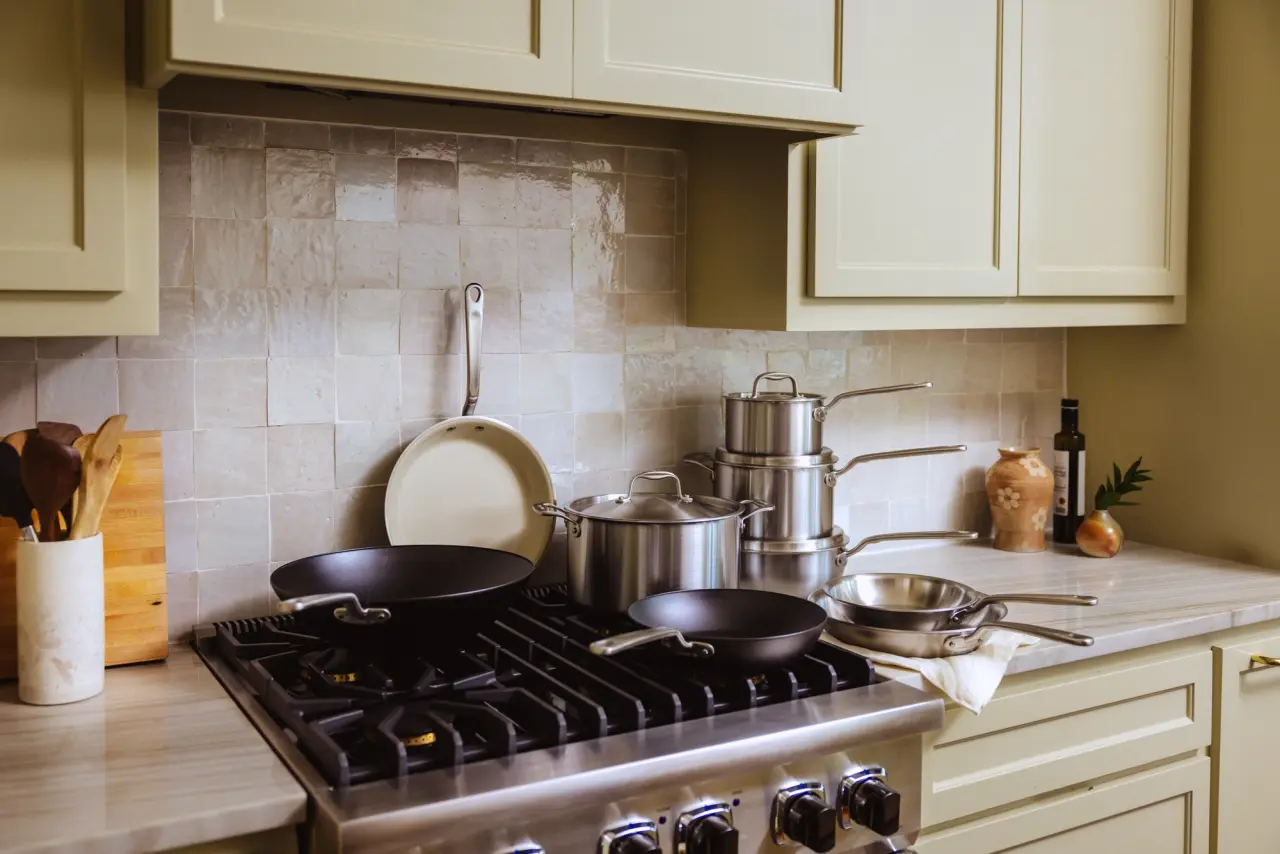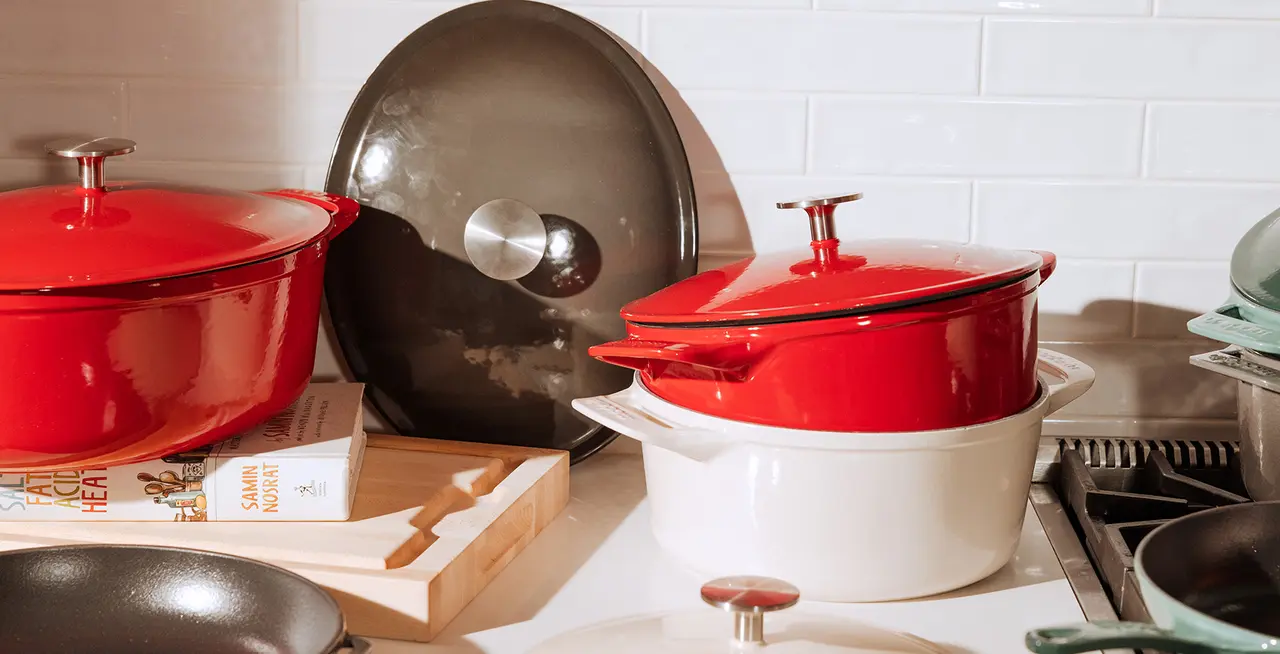When cooking a lot of food at once over high heat, there are typically two options: a grill or a griddle. Both are suitable for high-heat cooking, offer plenty of surface area, and can be used to cook outdoors—especially if you're using the Made In Grill or Carbon Steel Griddle.
While there are a ton of foods you can cook on both a grill and a griddle, they’re not completely interchangeable. A grill, like the Made In Grill, exposes your food directly to open flame, achieving a deeper and more robust char than a griddle, which sits over a heat source and prevents direct flame contact.
Despite their differences, both tools can bring rich, complex flavor to your favorite grilled foods—from steaks and seafood to stir-fries and paella. Here’s how to decide which one to buy for your cooking setup (and why you might want both).
Understanding Griddles
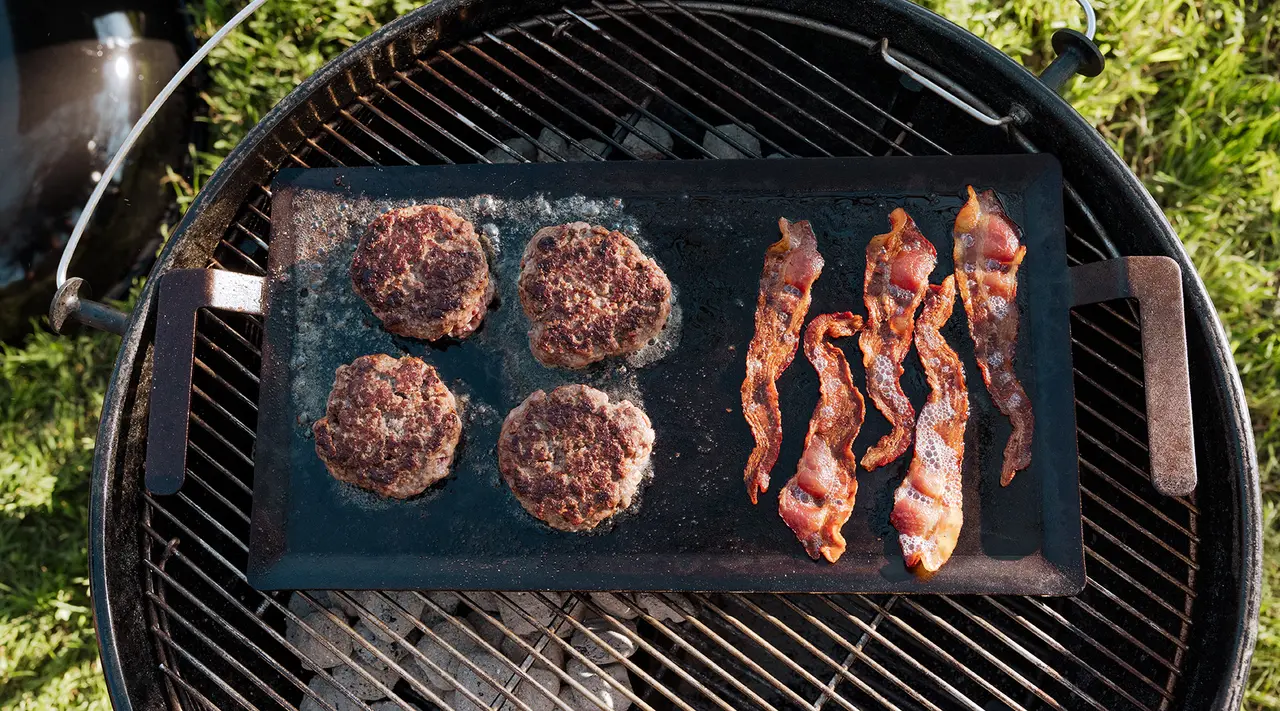
If you’ve ever peeked behind the counter at your favorite diner or burger spot, you’ve probably seen the cook tossing sizzling ingredients on a wide, flat cooking surface. This is a flattop griddle, typically made with high heat-resistant materials like carbon steel or cast iron. It’s perfect for cooking a batch of foods—like hamburgers, eggs, and breakfast proteins—all at once.
Since the flattop at your local greasy spoon isn’t exactly practical for a home kitchen, home cooks can replicate that spacious, high-heat surface with a stovetop griddle.
Our pre-seasoned Carbon Steel Griddle is large enough to fit over two burners (gas, induction, or electric), while remaining slim and lightweight enough to store between uses. It also features hand-welded handles, making it easy to transport between your indoor kitchen and your Made In Grill outside.
When to Use a Griddle
Reach for the Griddle whenever you want the complex, smoky flavors of grilled food with the convenience of a flat, naturally non stick cooking surface.
And if you have the Made In Grill, our Griddle is the perfect add-on. Slide the stainless steel grates aside and insert the Griddle to create a solid cooking surface—great for foods that would otherwise fall through, like diced vegetables, eggs, or delicate seafood. You’ll also avoid grease dripping into the flames, reducing flare-ups and simplifying cleanup.
Understanding Grills

A grill uses dry heat and direct flame to cook food placed directly on metal grates. The Made In Grill is a professional-quality charcoal grill designed for maximum control, flavor, and versatility. Like any charcoal or gas grill, it brings a deep, flavorful char to food that’s hard to replicate with other methods.
When to Use a Grill
The intensely smoky flavor a grill adds to your food is just one of its many benefits. With its large surface area, the Made In Grill can cook a lot of food at once and makes it easy to create different temperature zones. Char your steaks on the hottest part, then move them to a cooler section to gently finish cooking.
Plus, grilling is a great option for health-conscious cooks: the dry heat method requires little or no oil while still delivering maximum flavor.
Key Differences Between a Griddle vs. a Grill

Because a griddle provides uninterrupted surface area, it allows for better contact between your food and the cooking surface. This makes it ideal for foods like smash burgers and steaks, producing excellent Maillard browning and a crisp, flavorful crust.
It’s also more versatile for cooking smaller or more delicate foods—like pancakes, eggs, or chopped veggies—that would fall through grill grates. Our Carbon Steel Griddle is naturally non stick and easy to clean, making it a solid choice for both indoor and outdoor use—especially when paired with the Made In Grill.
Which Is the Better Outdoor Cooking Surface?

It’s hard to pick between a grill and a griddle—both bring something valuable to your outdoor cooking game. If you love cooking outside in warm weather, the Made In Grill offers excellent performance, heat control, and char. But if space or budget are concerns, the Griddle is a fantastic alternative that still delivers on flavor.
Better yet? Use both together. Our Carbon Steel Griddle turns your Made In Grill into a hybrid flat-top grill, giving you maximum versatility. Whether you’re searing burgers directly on the grates or sautéing veggies on the Griddle, you’ll be able to cook nearly anything, anywhere.
Ready to Cook?
Whether you’re getting your backyard barbecue setup dialed in or just looking for an easy way to cook more food faster, the Made In Grill and Carbon Steel Griddle make a powerful duo.
Our Griddle combines the ease of stovetop cooking with the flavor of grilled food—and when paired with the Made In Grill, it offers the best of both worlds.
